
In this article, we decided to combine the three most famous and important of the triumphal arch of Rome - Constantine, Titus and Septimius Severus. Especially because they are located within walking distance from each other and view them in one go.
Triumphal arches, is considered an architectural monument, which is a big solemnly decorated arch. Triumphal arch was installed at the entrance to the city at the end of streets, bridges, wide roads, in honor of the winners or to commemorate important events.
Previously, the arc de Triomphe was built to be temporary, they often were built of wood, and permanent, these arches had to be long, therefore, were constructed from stone, brick or concrete. It permanent Roman arch and has survived to the present day, they will be discussed in this article. All triumphal arches may have one, three or five spans, was covered with semi-cylindrical vaults, ending with entablature and attic. Decorated with statues, reliefs, high reliefs or commemorative inscriptions, or both combined.
Let's start in order and examine each arch in detail and separately
The arch of Constantine located in Rome, near the most famous and important attractions of Rome - the Colosseum and the Roman forum in Via di San Gregorio 184, 00186 Roma, Italia. Like the amphitheatre, the arch of Constantine is the most bright arch of Italy and one of the main monuments and attractions of Rome.
The arch is located under the open sky and you can see it absolutely free at any time of the day.
The arch of Constantine (Latin name Arcus Constantini, Italian Arco di Costantino) is a three-span stone arch, that is, three passes - the Grand Central, located at the center of the monument, and two smaller on the sides.

The arch of Constantine plus has an impressive size in height it reaches twenty-one meters wide for more than twenty five meters and a depth of over seven meters. The main part of the monument is made of marble blocks, attik same brick and faced with marble.
Also the arch of Constantine is the most visited and the later is the latest of all the surviving Roman triumphal arches.
The arch was erected in 315 ad. Is the only one in Rome, built in honor of victory over a foreign enemy and civil war, which makes its historical value is even more significant. Dedicated to the victory of Constantine over Maxentius at the battle miliscola bridge on 28 October 312.
In architecture arches are used elements taken from more ancient monuments of spolie. Spolii, translated from Latin means "trophies", as applied to arches this elements, mainly columns, which in late antiquity and the early middle Ages was filemyfiles of ancient buildings, as a rule, pagan temples and was used in the construction of the new buildings, usually Christian churches.
And in the case of the arch of Constantine, many of her jewelry to the construction used on other previously destroyed buildings. For example, on the attic there are eight marble statues from the forum of Trajan. Smaller bays are decorated with medallions depicting hunting scenes of the time of Hadrian, is another second century.
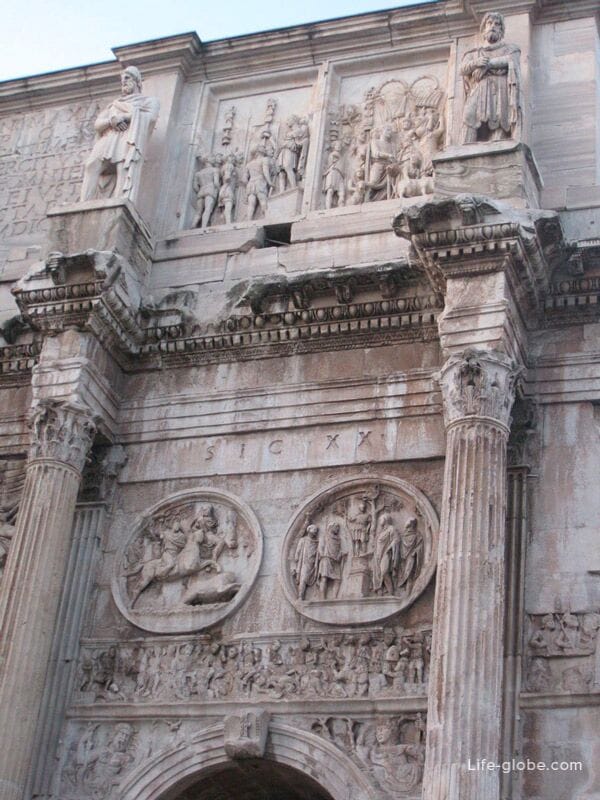
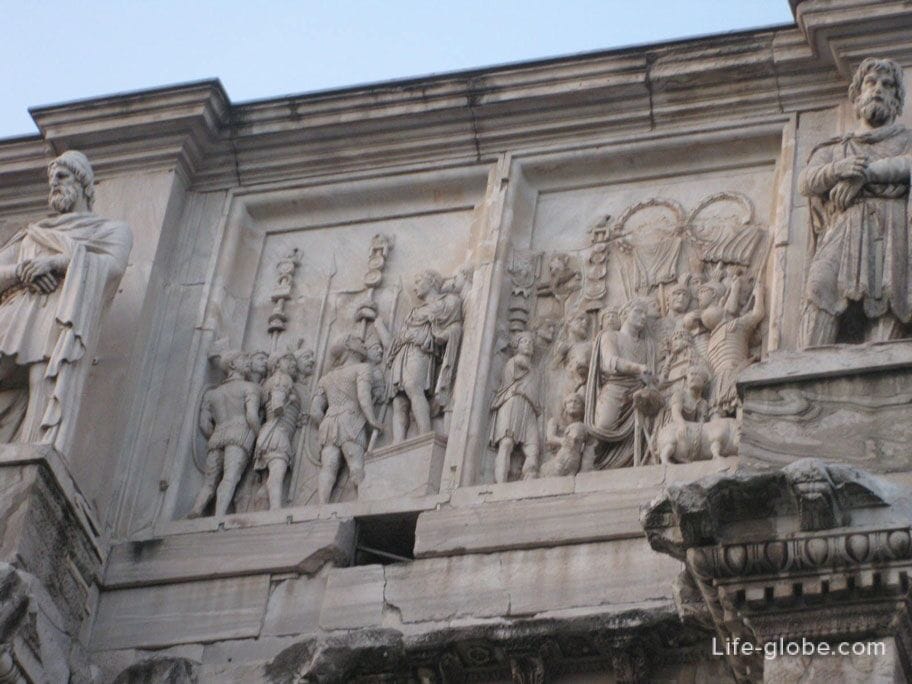
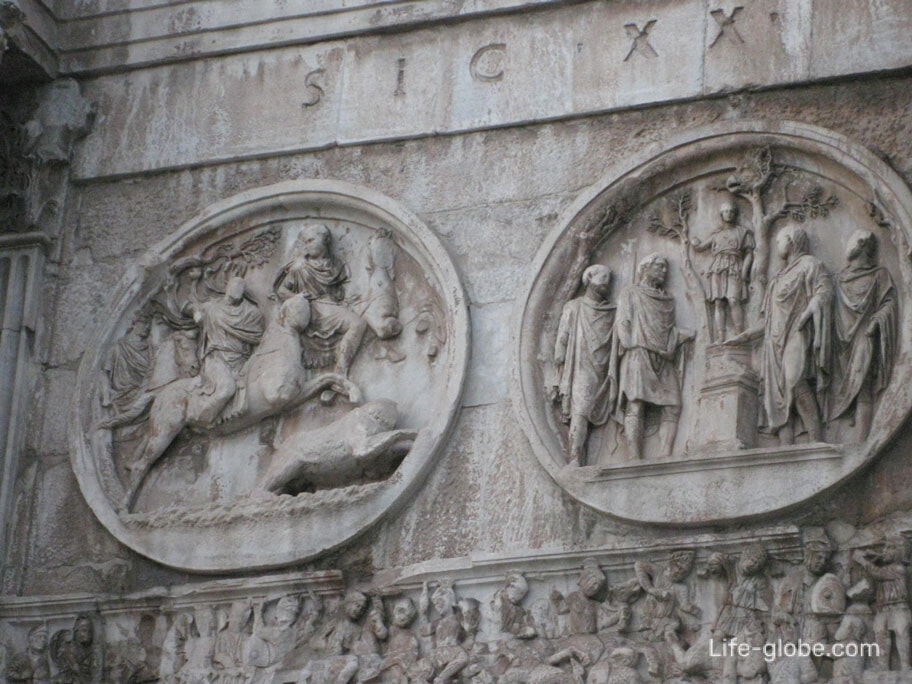
That is the arch of Constantine was later become a major example for many such structures constructed in later periods. So in Rome there are other similar three-span stone arch.
Arch of Titus (Arco di Tito) is the oldest triumphal arch in Rome. Therefore, in addition to architectural, is still pronounced historical significance.
This arch unlike the arch of Constantine, arch of Titus, with a single span and has a more modest size. Has a height of over 15 meters and a width of 13 meters.
Located near the first arch, in the Eastern part of the Roman forum, on the ancient Sacred road Via Sacr.
Built by order of Emperor Domitian in 81 ad, in honour of the Roman Emperor Titus shortly after his death, to commemorate the capture of Jerusalem in the year 70.
The monument is built of white marble Interscope produced in Attica. The arch is decorated with half columns in the corners near the stairs carved four winged goddess of victory - Victoria. Inside the passage there are two bas-relief depicting a procession with trophies captured in Jerusalem, there is depicted the Emperor Titus, managing Director of Quadriga. Statue of Titus in the Quadriga was once located on the top of the arch, however, until the present day have not survived.
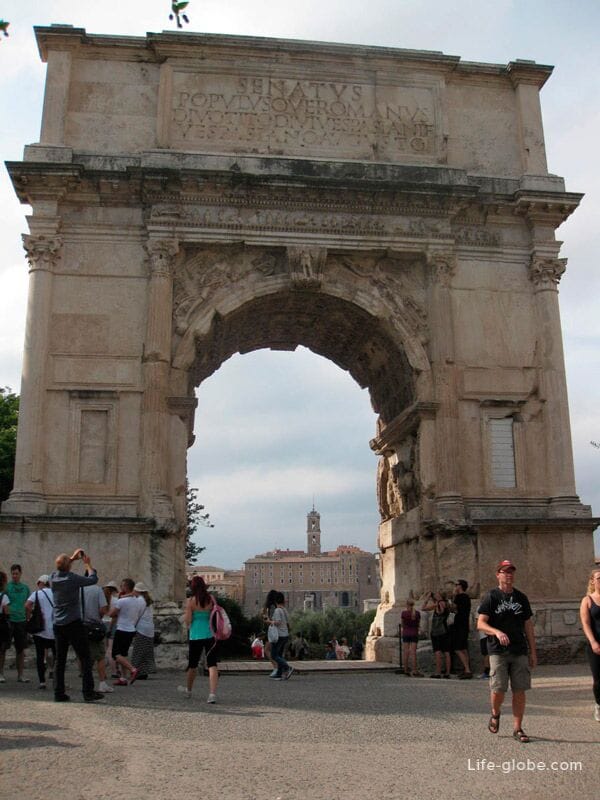
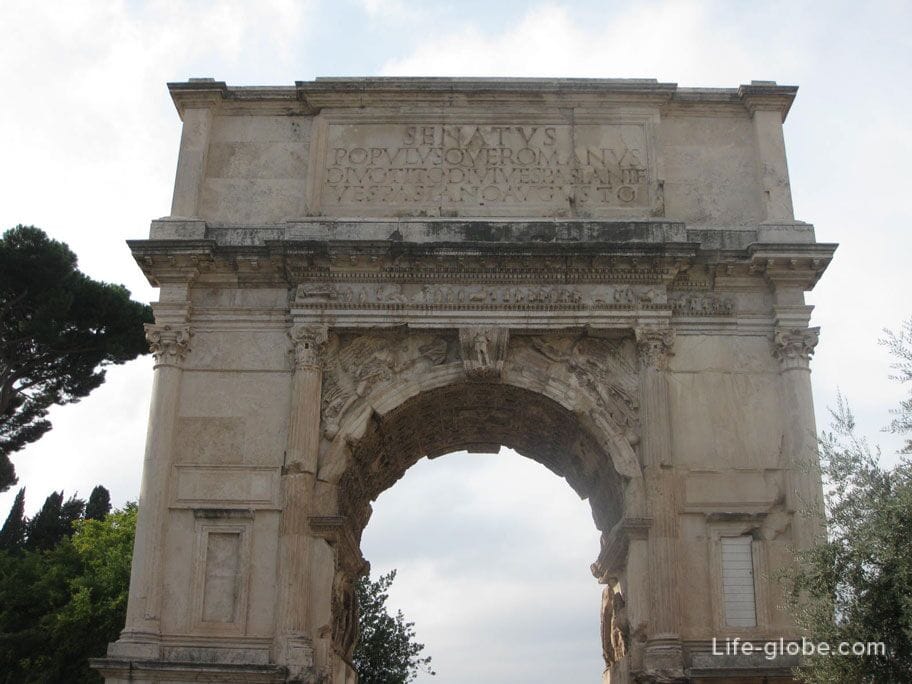
That is the arch of Titus served as the model for creating many other triumphal arches of the New time.
By the way, for the construction of this arch in Rome was specially brought over 50 thousand Jewish prisoners. The construction of the arch marked the beginning of the Jewish Diaspora in Europe.
Rumor has it that the attic of this Roman triumphal arch was buried the remains of Titus. Similar honors were awarded only three ruler in the entire history of the Roman Empire - Caesar, whose burial was in the Roman Forum, Trajan - in the basement of the nominal column and Titus. Thus, the arch of Titus is not only the progenitor of the later triumphal structures of Rome, but also a memorial, the Moscow mausoleum or Pantheon Kahina in Spain.
Arch of Septimius Severus (Arco di Settimio Severo) and the arch of Constantine is a three-span arch, sufficiently well-preserved to our times.
Arch of Titus is located as the arch of Titus, in the ancient Sacred way Via Sacra, in the Northern part of the Roman Forum between the Curia and Rosstroy.
The monument was built in 205 ad to commemorate the victories of Emperor Septimius Severus and his sons Caracalla and Geta over the Parthians in two military episodes 195-203 years.
The arch is made of brick and travertine (calcareous tuff). The surface is covered with marble plates. Has a height of over 20 meters, a width of just over 23 meters and a depth of just over 11 metres.
Both sides of the arch are decorated with inscriptions praising the Roman Emperor Severus and his family. In the inner space of the arch, between the spans is depicted the goddess of victory Victoria, and scenes from battles. In addition, on both sides of the monument are decorated with paired columns with elements of different orders. Previously, the monument was also decorated with sculptures of the North with his sons, but to this day they have not survived.

